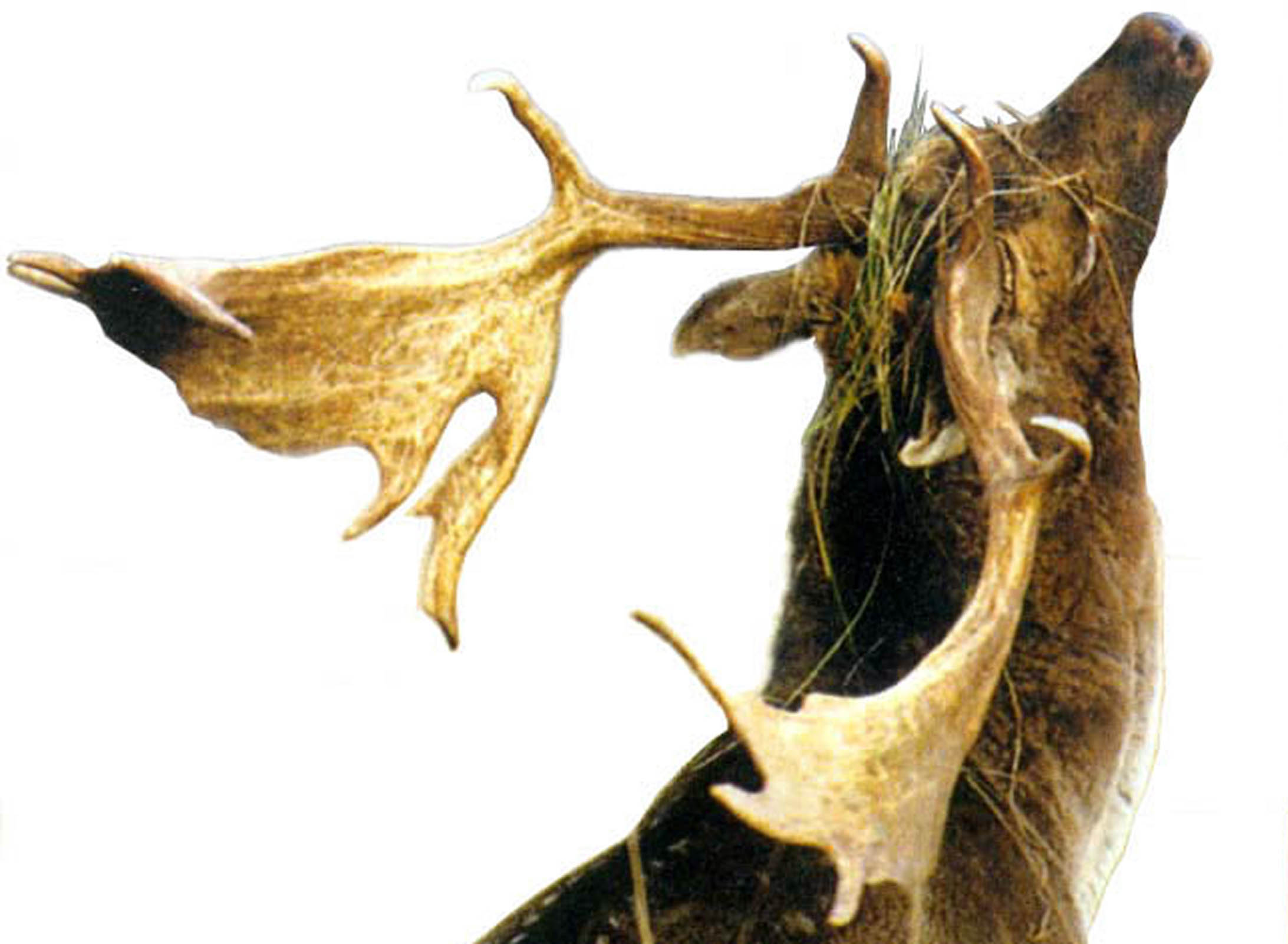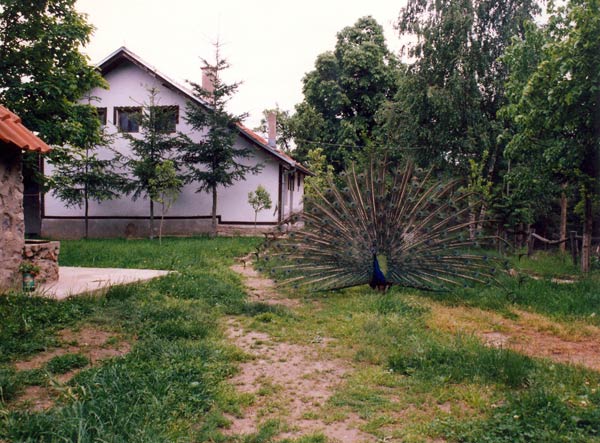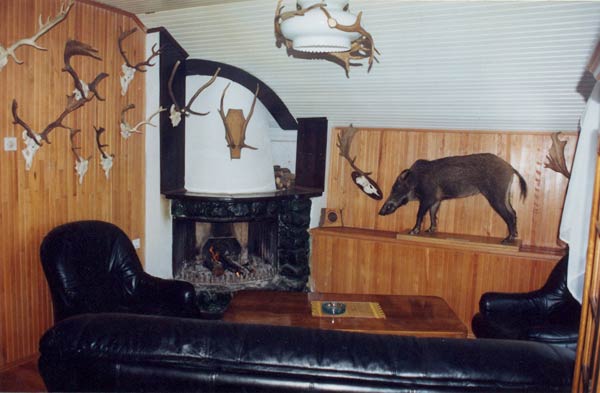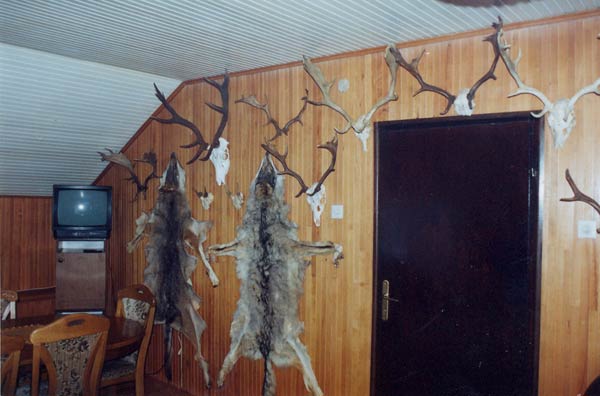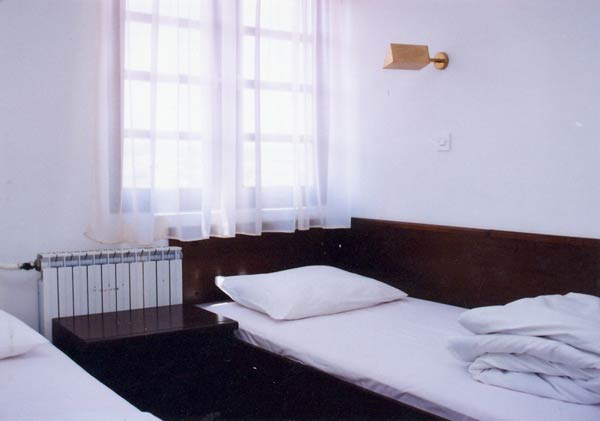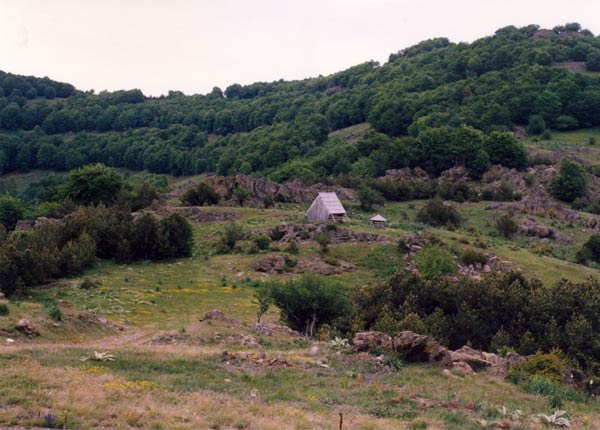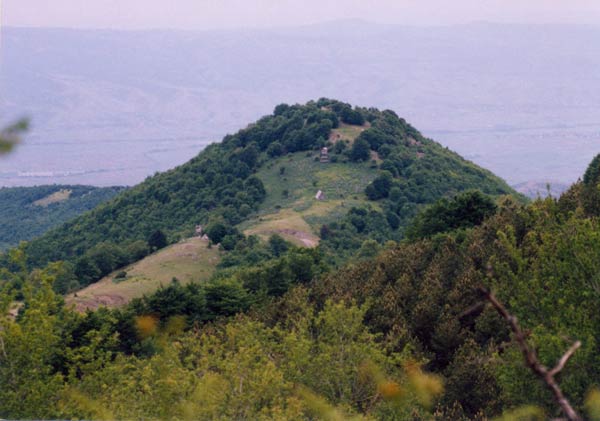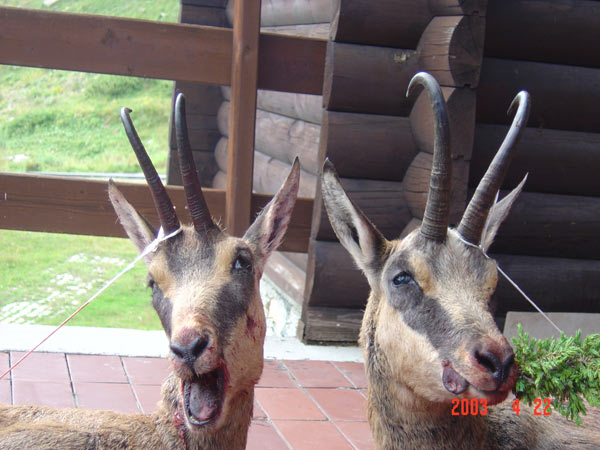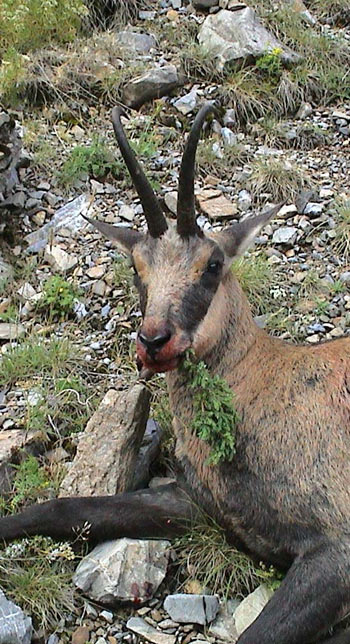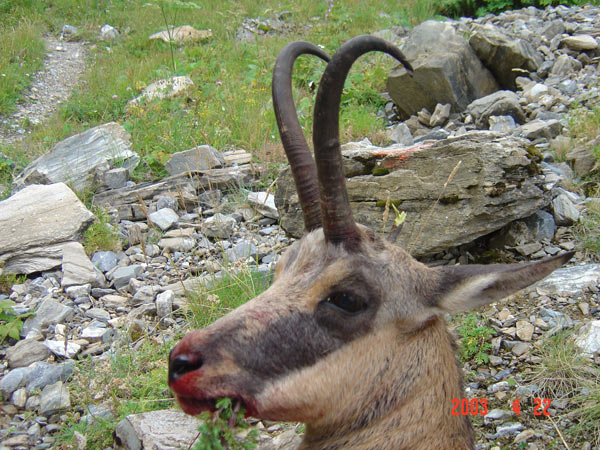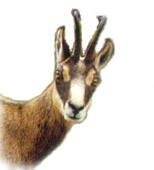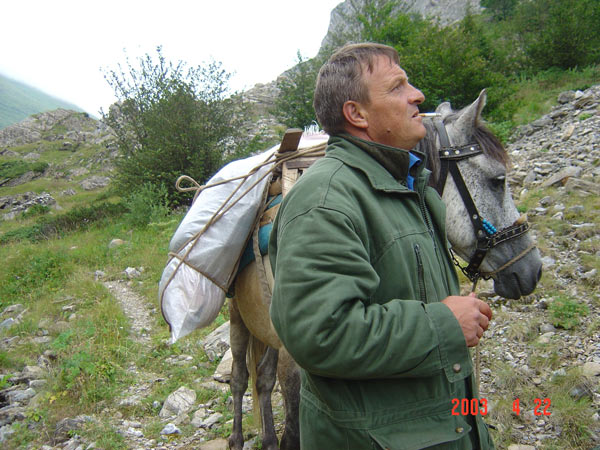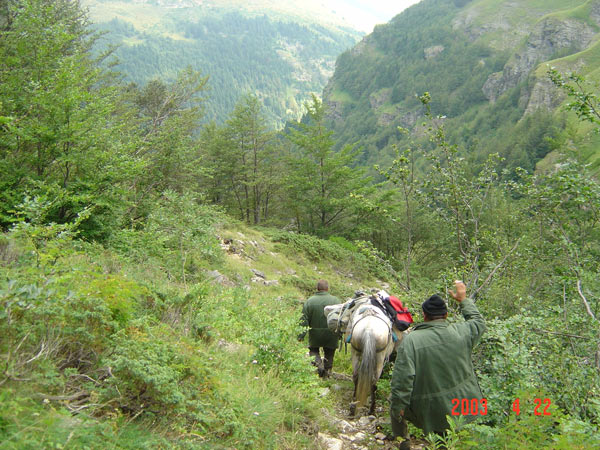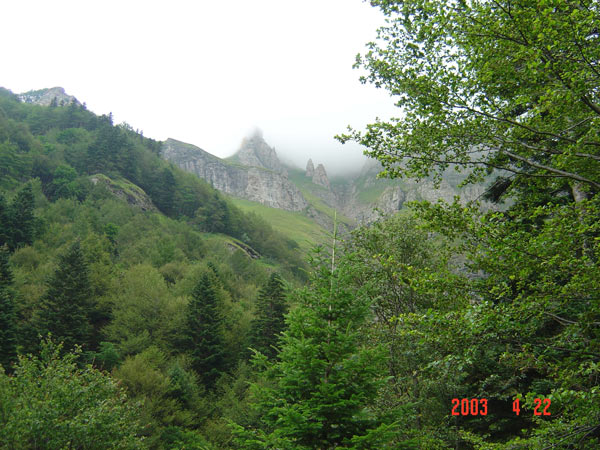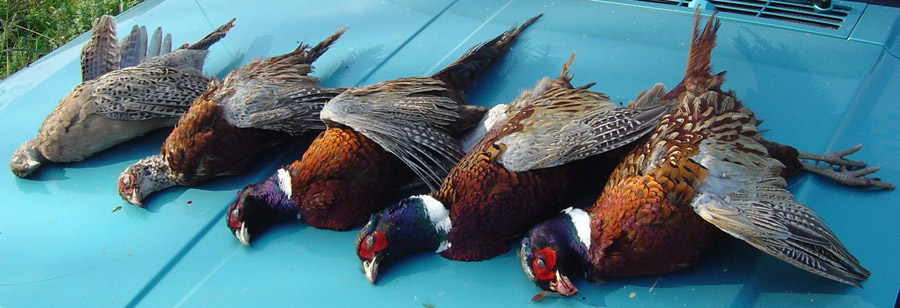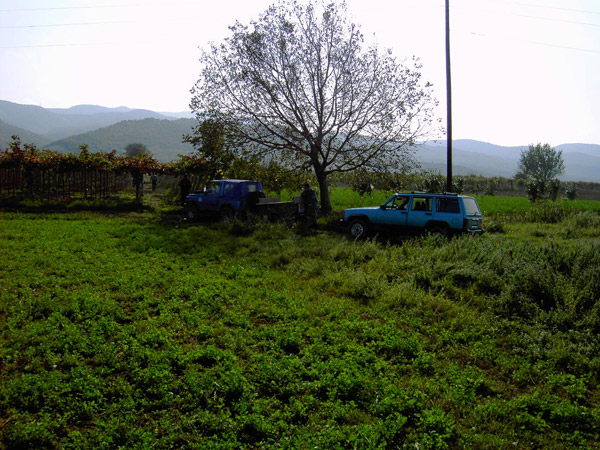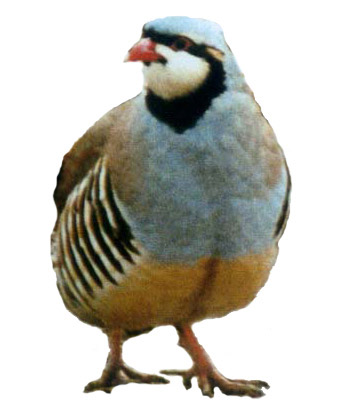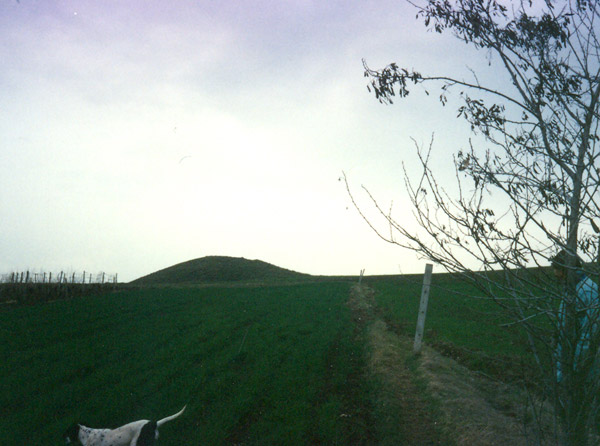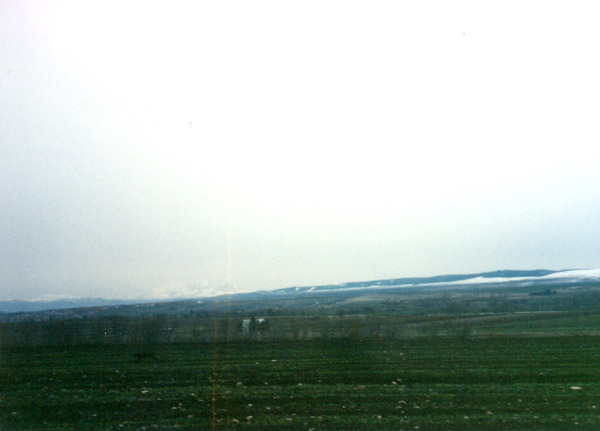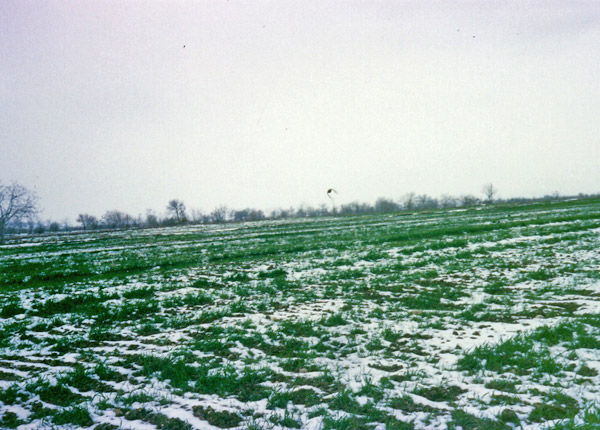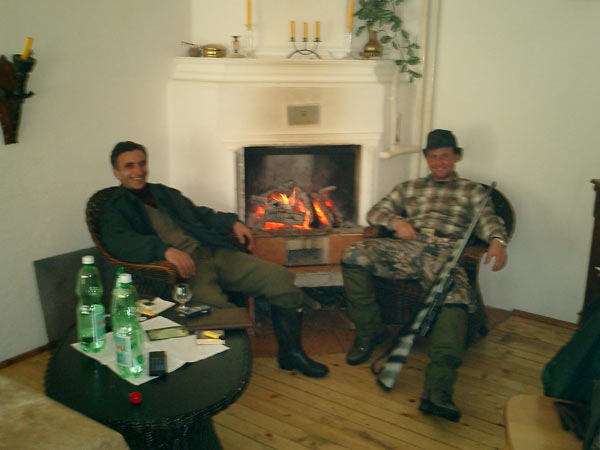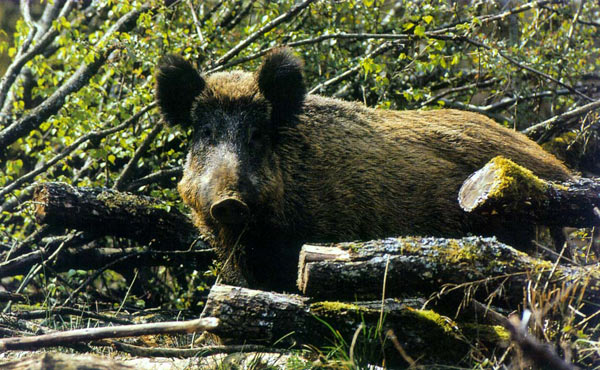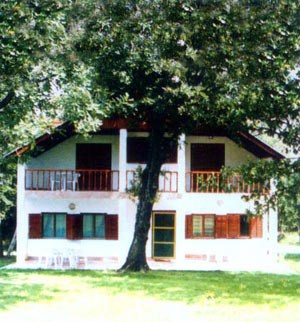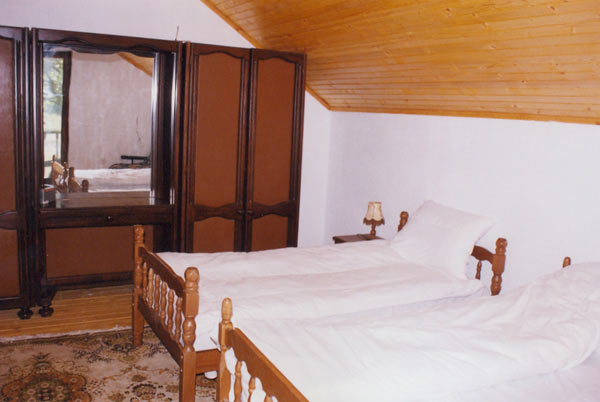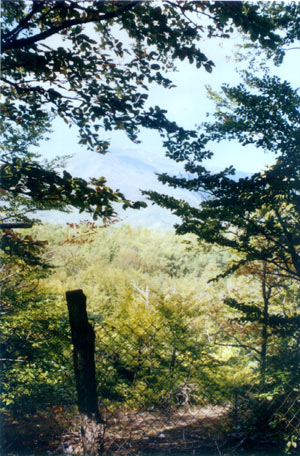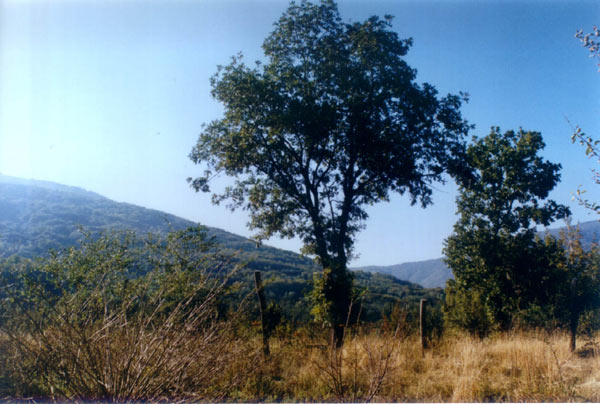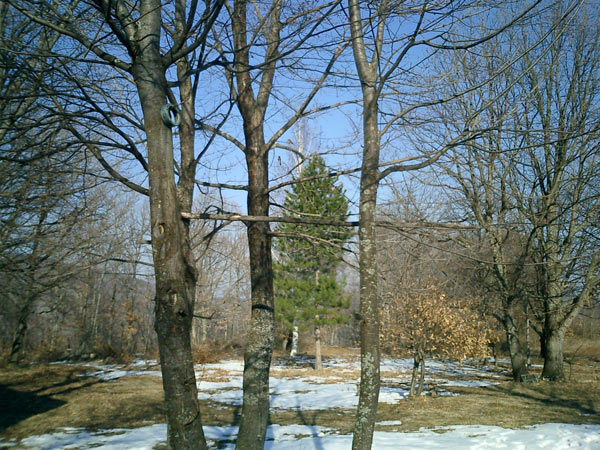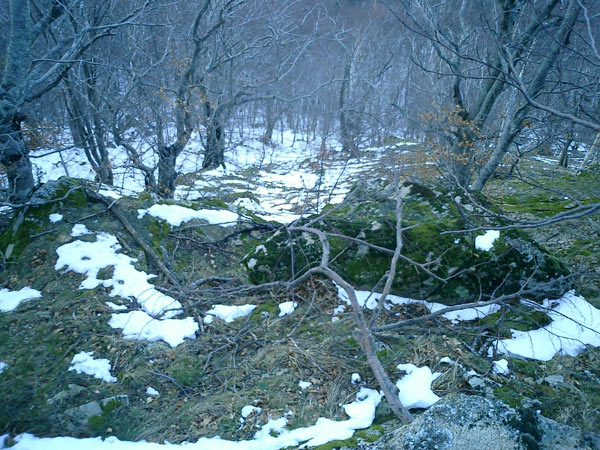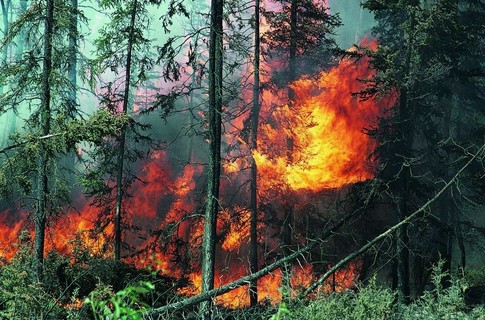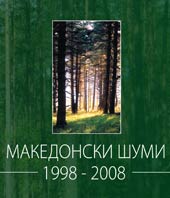About forests
Forests in Republic of Macedonia
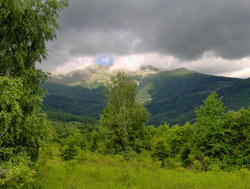 Republic of Macedonia occupies 2.543 200 ha of the land. According to the latest data of the Special plans of woods management which are for commercial use (statement,2008), total forest area in RM amounts to 1.091.857,59 ha, from which 835.055,82 ha are totally forest covered area and 256.801,77 ha of the forest is non-covered forest area (bare lands).
Republic of Macedonia occupies 2.543 200 ha of the land. According to the latest data of the Special plans of woods management which are for commercial use (statement,2008), total forest area in RM amounts to 1.091.857,59 ha, from which 835.055,82 ha are totally forest covered area and 256.801,77 ha of the forest is non-covered forest area (bare lands).
It should be mentioned that there are still 80.000 ha or 7,32% forest and forest land with small commercial importance for which are no processed Forest-commercial bases.
The forest covered area occupies 255.444,74 ha high trunk forest plants, 546.179.40ha low trunk forest plants, 14.459,50 ha forest herbs and 18.978,18 ha are under bushes.
Total forest reserve according to the same data base amounts to 75.939.573 m3, that is 91 m3/ha. Total annual growth amounts to 1.616.782 м3, that is 1.93 m3/ha.
Total anticipated growth for 10 years amounts to 10.948.149 m3, or annually 1.094.815m3. Its exploitation amounts to 75%.
According to the statistical year book of Republic of Macedonia 2004 (January.10.Forestry), Public statistics institute of Republic of Macedonia, 90,14% of the total forest area in RM are in public ownership, while in the total wood reserve the Public sector participates with 92,20%. Private forests participate with 9.86% of total forest area and participate with 7.8% of the total wood reserve.
Forestry in Republic of Macedonia is economic branch which in gross national product participates with 0.3 to 0.5 %, however if we give value to the generally useful functions, the contribution is considerably greater.
Forests management in Republic of Macedonia is based on complexity, multifunctional and permanent production where we take care of relations for healthy forests, ecologic principles of environment preserving and nourishment and woods renewal.
Forests occupies almost one third of dry land of the planet Earth and as a rule are found at those locations where, because of unfavorable climate, sterile land ,inaccessible regions and land configuration, are inconvenient for agricultural production or other use. According to survey of absolute of 35% and relative forested area of 0,47hA per citizen, Republic of Macedonia, with area 2 571 000 ha and number of citizens 1 909 000 and forest covered land 835.055,82ha, is on the lowest part of surveys in the region( in front of Slovenia and Monte Negro).
The natural conditions of R.M conditioned by location, climate, relief, geologic structure of terrain, hydrologic-hydrographic features and similar, enable existence and growth of great number of plant and animal species. Because of that, our country belongs to countries with rich biodiversity. A great number of plant and animal species are relics and endemic as well.
The flora representing the forests in R. M comprise 319 sorts of trees and bushes with more than 80 subtypes and varieties within 119 genes and 54 families, and 16% of total number of species are endemic or sub endemic on the Balkans. According to the previous explorations wood sorts of trees and bushes create 81 wood phytocenosis within 31 associations, 11 genes and 6 classes.
Based on various useful functions of forests, R.M treats the forests as part of national wealth and inheritance. Confirmation for that is Constitution of Republic of Macedonia, where plant and animal world, properties in general use, as well as subjects and objects of special cultural and historical importance are defined with law and there are properties of general interest for the Republic and have a special protection”.
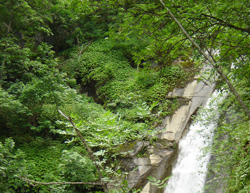 Traditionally, forests and forest land are most frequently understood by the society as resources which give material welfare, mainly wood and other wood products as medical plants, parts of plants, mushrooms, fruits and etc. Besides the economic function, woods have other various useful functions for the society as in: recreation of people, multifunctional protective function especially regarding protection of biodiversity and stopping the erosion, amicable climate influence and water regime, oxygen production and environment quality etc. In recent years a great importance is given to the forests in reduction of carbon dioxide as one of gases which contributes in greenhouse effect. These and other important functions of forests are in correlation with their condition and structure, regarding to the area and quality.
Traditionally, forests and forest land are most frequently understood by the society as resources which give material welfare, mainly wood and other wood products as medical plants, parts of plants, mushrooms, fruits and etc. Besides the economic function, woods have other various useful functions for the society as in: recreation of people, multifunctional protective function especially regarding protection of biodiversity and stopping the erosion, amicable climate influence and water regime, oxygen production and environment quality etc. In recent years a great importance is given to the forests in reduction of carbon dioxide as one of gases which contributes in greenhouse effect. These and other important functions of forests are in correlation with their condition and structure, regarding to the area and quality.
The economic, social and ecologic function of the forests is of great importance for the sustainable development of the society and for life quality improvement, especially in rural and mountain regions.
The public enterprise for managing with forests is in ownership of Makedonski sumi and operates with public forests in Republic of Macedonia. The public enterprise in this time passes through various complex periods with numerous problems and contradictions which are more or less solved successfully.
The public enterprise “Makedonski sumi” was established with decision of the Government on December.15.1997 and began to operate on July.1.1998 as legal successor of more economic entities which up to the establishment were managing with forests.
In the first years of independence, the Republic of Macedonia was faced with difficult transition period when the economic and political system had to be quickly reconstructed, and with that the economy itself. The transitional period was additionally impeded because of complex social and economic situation.
 The various negative appearances in development of society and economy had an impact also on Forest sector. And besides difficult economic condition and inherited dubious the public enterprise “Makedonski sumi” operates as an important subject in the Republic of Macedonia, following the political and economic changes in the Republic of Macedonia in accordance with euro integration processes which demand priorities and focusing on useful functions of forest and its managing, integration in more wide context where protection, biodiversity and concern for nature and environment are on above all. The Republic of Macedonia has signed and ratified a lot of international contracts and conventions for protection of forests and environment which have an impact on forestry sector. The orientation of country towards EU requires harmonization of forest politics and its obligations.
The various negative appearances in development of society and economy had an impact also on Forest sector. And besides difficult economic condition and inherited dubious the public enterprise “Makedonski sumi” operates as an important subject in the Republic of Macedonia, following the political and economic changes in the Republic of Macedonia in accordance with euro integration processes which demand priorities and focusing on useful functions of forest and its managing, integration in more wide context where protection, biodiversity and concern for nature and environment are on above all. The Republic of Macedonia has signed and ratified a lot of international contracts and conventions for protection of forests and environment which have an impact on forestry sector. The orientation of country towards EU requires harmonization of forest politics and its obligations.
Current conditions necessitate creation of effective system of multifunction managing with forests and development of modern forest industry with high standards.
About woods
History of Forestry in Republic of Macedonia
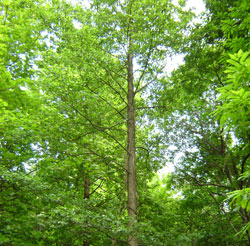 In distant past the territory of Republic of Macedonia and the Balkan Peninsula was covered with dense and impassable forests. The demographic development of population and the constant aspiration for survival urged people to maximum exploitation of nature. The woods were constantly being destroyed by burning and cutting down in order to get cultivable areas and pastures.
In distant past the territory of Republic of Macedonia and the Balkan Peninsula was covered with dense and impassable forests. The demographic development of population and the constant aspiration for survival urged people to maximum exploitation of nature. The woods were constantly being destroyed by burning and cutting down in order to get cultivable areas and pastures.
Constant migration of the population in this area which has started during Hellenic and Roman times, through Byzantine and Ottoman Empire and is still in progress even now in the form of economic migration, led to complete negligence and oblivion of these forested areas. Under the influence of biotic and a biotic factors these surfaces became eroded, degraded and turned into barren grounds.
The Republic of Macedonia is situated in the middle of the Balkan Peninsula between 40° 50' up to 40° and 20' north geographic width, 20° 27' and 23° 05' east geographic length, at total surface of 25.713 км2. The distance to the Aegean Sea is about 60 km air line and from the Adriatic sea 80 km. Out of the total surface of Republic of Macedonia, 36 per cent are surfaces covered with wood.
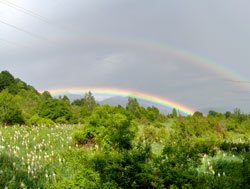 People and forests have always been linked with unbreakable connection of mutual dependence and supplement.
People and forests have always been linked with unbreakable connection of mutual dependence and supplement.
Forests were witnesses of the human development and they were always part of people’s surrounding. That is why there is a forest cult in all cultures. Forests are magnificent gift of nature. Since distant times it has aroused admiration and fear and made people think that forests have some incomprehensive power and force. This force comes from the air it produces, from the shades it provides and from the springs that flow through its greenness. Forests are the pillars of the eco system. That is why they should be protected and looked after.
There are no written documents from the past concerning the forestry development in Macedonia, so there is no sufficient data or some valid knowledge about the treatment of the forests during different periods in history.
However, according to some researches, regardless the period, the social and the political structure, things such demographic development of population, industrial and economic development were ones that dictated increased needs for technical and fire wood. This led to destructive and extensive approach towards forests. They were simply cut off and destroyed.
The first recorded material involving forests on the territory of the Republic of Macedonia is found in the writings of the well known Turkish writer and historian Evlija Celeblija. In his travels accounts, passing through the former territory of Macedonia which was within Ottoman Empire, he wrote that while passing through the area near Sveti Nikole with his caravan they needed to hire local people to cut down the woods so they could pass freely.
If this is true it is an undisputed fact that “Ovce Pole” area was rich with woods which, unfortunately, is not the case nowadays.
It is supposed that the reasons for permanent and partial vanishing of forests from some parts in Macedonia are:
- Intensive deforestation in areas by and around the river Vardar. This was suitable because they used the river to transport the wood to Thessaloniki, which was then used to meet the needs of the Ottoman Empire.
- One of the main reasons for cutting down woods was the production of wood charcoal used for heating baths and splendid rooms of masters and begs in winter in some big cities such as Skopje, Bitola, Veles, Kumanovo and etc.
- The need for wood by the local population, for firewood, technical material or for leaves used for feeding domestic animals.
- Deforestation by cutting down or burning whole forests on flat places in hilly- mountainous regions for the purpose of getting cultivable areas.
- Fires in that time which were started either intentionally, due to negligence or by a thunder as a natural phenomenon.
The first written document dates back from 1858 during the Ottoman reign, and it is called the Ramadan Law. It refers to nature, woods, pastries and waters. In 1869 the Shevalie law was implemented and another one was made in 1894. These laws regulated: village woods, private woods and monastery-clerical woods. Property ownership to these parcels was regulated by issuing ownership documents. These Laws also dealt with woods planned for cutting down, prohibition for cutting down and grazing in young woods, collection of taxes, and other regulations referring to forests which were conducted up to 1905.
From today’s point of view we can not be sure how and to what extent these regulations were implemented and obeyed during that period. However it was a new beginning for regulation of rights, obligations and treatment of forests, of which some traces can be found even today such as the terms “vakavski sumi” and Turkish deeds.
Then a difficult period in the Balkan starts - political wars and economic crises. Ilinden uprising, Young Turk revolution, Balkan wars and the First World War. Needless to say – forests were not treated respectively.
Immediately after foundation of Kingdom SHS in 1922 the first Law on Forestry was made. In 1929 the Kingdom was divided in regional units of which one was called Vardar regional unit and was the territory which occupies most of today’s Republic of Macedonia. A great part of rights and obligations concerning forests were transferred to regional units. The regional units through districts, assemblies of their authorities- the national councils, made legal provisions, regulations and decrees for treatments of forests. This period marks significant improvement in the forestry. It is introduced as an economic branch. The Law on Forests in 1928 regulated ownership of woods as public or private, real estate registry was introduced and deed books were placed in use. Commercial forests were defined which were intended for cutting .There was a prohibition for woods cutting and cattle grazing, mostly in young forests. In 1931 a tax on woods was introduced, and a Law for limitation of the number of goats.
Nevertheless after the Second World War in the Former Yugoslav Republic and in our country, forestry is organized as modern economic branch, which assumes full and intense responsibility in management of forests. The organizational setting of forestry is regulated by legal regulations and their implementation in practical use, as well as all procedures and activities for growing woods, protection, arrangement and using up woods in both social and private ownership.
The establishment of enterprises as forest holdings, which operated professionally in the field of forestry will contribute to development of forestry and permanent managing and utilization of forests.
During the Second World War in 1943 and 1944 and after the war, Bulgarian war prisoners built a solid road from Shtip through village Radanje that led to the mountain Plachkovica. This road will later have an important role in forest managing.
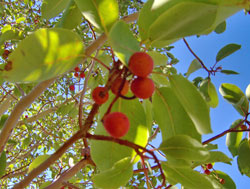 During the first years after the Second World War the country was in a very difficult state. The authorities from the former Yugoslav Republic and the citizens were facing many problems as a consequence of the war. Devastated country, destroyed industry, economy and infrastructure, broken school and health system, disturbed life standard of the people, with no stable economy or finances. The country experienced the inevitable crash after the war. However, things had to be solved and somehow put to function again. Some things needed repair but most things needed to be completely rebuild. Forestry was disadvantaged as well. But, in comparison to the other economic branches, forestry was in more specific state because in pre war period there was not any significant and constant development in organized and modern forestry. Though the initiative for development of modern forestry comes from the pre war period, significant steps had to be taken after the war. To get it implemented and operational in a practical application, the procedure and time distance of several years had to be undergone. First thing that had to be done was to adopt quality regulations, which will regulate forming of the organizational structure and operation of forestry as an important industry, with all its activities such as: raising forests, cultivation, protection, regulation and exploitation of forests.
During the first years after the Second World War the country was in a very difficult state. The authorities from the former Yugoslav Republic and the citizens were facing many problems as a consequence of the war. Devastated country, destroyed industry, economy and infrastructure, broken school and health system, disturbed life standard of the people, with no stable economy or finances. The country experienced the inevitable crash after the war. However, things had to be solved and somehow put to function again. Some things needed repair but most things needed to be completely rebuild. Forestry was disadvantaged as well. But, in comparison to the other economic branches, forestry was in more specific state because in pre war period there was not any significant and constant development in organized and modern forestry. Though the initiative for development of modern forestry comes from the pre war period, significant steps had to be taken after the war. To get it implemented and operational in a practical application, the procedure and time distance of several years had to be undergone. First thing that had to be done was to adopt quality regulations, which will regulate forming of the organizational structure and operation of forestry as an important industry, with all its activities such as: raising forests, cultivation, protection, regulation and exploitation of forests.
After the war and the liberation, FNRJ was established. The years 1946-1947, within the former SFRY, the Law on Forests was passed according to which the forests were managed by Public Boards. After that, adopting the Rules of Forest Management in 1975, marks the beginning of the first planned forest management. According to this regulation, about 80% of the forest area is covered by Managing elaborates (Plans).
Years 1945-1947, within the frames of SRM, Law on Forests was passed according to which the National councils were in charge of managing with forests. After that, with passing a Rule Book on forest managing in 1975, the planned woods managing begins for the first time. With this rule book, around 80% of wood surface was included with elaborates (Plans).
It is important to state that with the establishment of afforestation fund of bare places in SRM in the period from 1965-1990 about 100 000 hectares of bare areas all over Macedonia were foretasted. For example : forestation of Goce forest-Demir Kapija, Vodno-Skopje forestations from Demir Hisar, Bitola.up to Resen (with merit to our late colleague Janko Vlav from Bitola), forestation in the region of Palanka and another afforested surfaces. During this period in SRM there were:
- The Secretariat of agriculture, forestry and water under which competency were the forests. Thirty forest companies acting as independent legal entities with separate accounts were in charge of the forest managing each of them operating according to the Regulation Book making managing elaborates. Each territorial unit made forest-economic plans that had validity of 10 years.
- Up until 1976 the Macedonian forestry pride was The Institute of Forestry, established in 1676/77 in the village Gorno Vranovci.
- As highly skilled, educational institution for education of professionals in the field of forestry was the Faculty of forestry established in 1947.
- As professional institution for designing and arrangement of forests established in 1952, was the Institute of Arrangement of Forests and Roads-Shumaproekt.
About woods
Geographical features of Republic of Macedonia
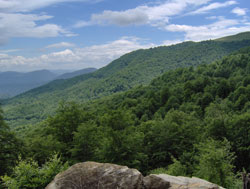 Republic of Macedonia occupies rather small area. The longest airline distance north to south is about 150km, and east to west about 210 km. Despite this, great heterogeneity can be noticed in the soil cover.
Republic of Macedonia occupies rather small area. The longest airline distance north to south is about 150km, and east to west about 210 km. Despite this, great heterogeneity can be noticed in the soil cover.
In our country there are many geologic formations with different age, different geographic and granular composition. There is an influence of more climates (continental, Mediterranean, mountainous) whose elements vary to large extent and that leads to appearance of many different floral associations. Due to the long term influence of pedogenetic factors our soil in time was changing and attained different degree of evolution. The long term human influence had also its own contribution which had changed the direction of the natural pedogenetic processes of our soil.
Republic of Macedonia is continental country, occupying the central part of the Balkan Peninsula , between 40° 50’ and 42° 20’ average geographical width and between 20° 27’ 30" and 23° 05’ east geographical length .It borders Albania in the west (191 km, )Greece in the south (262 km) , Bulgaria in the east (165 km) and with Serbia in the north (231 km). The total border length is 849 km, with a total area of 25.713 km2.
Configuration
Republic of Macedonia has many complex geology and extensive configuration which causes large variations of soil types.
The mountains are big configured forms which cover around two thirds of the territory of the country. They are part of old clan group. They are part of the old Rodopian group, in the east part and the young Dinar group, in the west part of the country. The Rodopian group of mountains are lower than 200 meters, with the highest pick Ruen 2252 meters of the Osogovo mountains. Dinar mountains are higher and raise above 2500 meters, with the highest top in Macedonia Big Korab- 2764 meters. Among these two mountainous groups Vardar area is located, along the two sides of river Vardar and Pelagonia horst anticlinorium in the central part of the country.
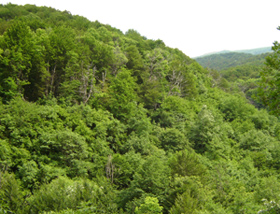 Valleys and large fields cut the mountainous configuration structures, covering around one third of the surface of the country. The most impressive are those valleys which extend along the river Vardar, including Skopje valley (1840 km2), while the biggest plane is Pelagonia plateau, in the southwest part of the country which comprises area of about 4000 km2, with an average altitude of 600 meters.
Valleys and large fields cut the mountainous configuration structures, covering around one third of the surface of the country. The most impressive are those valleys which extend along the river Vardar, including Skopje valley (1840 km2), while the biggest plane is Pelagonia plateau, in the southwest part of the country which comprises area of about 4000 km2, with an average altitude of 600 meters.
The karst configuration is specific for the Republic of Macedonia and is mostly spread in Paleozoic, Mesozoic, Paleocene, and Neocene lime stones which are found mostly in the central and west part of the country. The composition includes surface carst forms of crevices, depressions, hollows, and karst fields, as well as underground configuration forms, including 164 caves and 12 pits and abysses.
Hydrograph
Macedonia is considered as rich with water, with recorded and mapped 4,414 springs, whose total annual capacity reaches 6.63 billion m3 of water. In hydrologic sense the Republic of Macedonia is divided among the three water river basins of Adriatic sea (15% of the territory), with main mouth, river Crni Drim, Aegean Sea (85% of the territory), with rivers Vardar and Strumica, as the biggest water courses and Black Sea, whose river basin has insignificant territory.
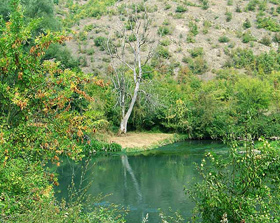 Vardar is the biggest river with around 80 % of the total water flowing out from Macedonia. Its total length is 388 km, 300 km of which flow in the Republic of 174 m2/sec.Larger right tributaries of river Vardar are river Crna (207km length) and river Treska (138 km, while the longest left tributaries are river Bregalnica (225 km) and river Pcinja (135km).
Vardar is the biggest river with around 80 % of the total water flowing out from Macedonia. Its total length is 388 km, 300 km of which flow in the Republic of 174 m2/sec.Larger right tributaries of river Vardar are river Crna (207km length) and river Treska (138 km, while the longest left tributaries are river Bregalnica (225 km) and river Pcinja (135km).
Being continental and having no access to sea, Macedonia is proud of the natural and artificial lakes. The most attractive of the natural lakes are tectonic lakes Ohrid, Prespa and Dojran. Lake Ohrid is the biggest, with surface of 358.8 mk2, of which 229.9 km2 belong to Macedonia, and the rest to Albania. The smallest, lake Dojran, contrary to the previous two which are located in the west part of the country, is located in the southeast part and has surface of 42.7 km2, and it belongs both to Macedonia and Greece.
Climate
If Republic of Macedonia and the neighboring regions were flat, they would have more expressed Mediterranean climate, if the geographic width and proximity of seas is taken into consideration. Secondary factors (complex configuration structure, side elevation) modify the Mediterranean influence.
Because of the specific natural and geographic properties, in Macedonia two main types of climate prevail: altered Mediterranean and moderate continental. Hence, two annual seasons may be distinguished: cold, wet winters and dry, hot summers, connected with transient seasons, spring and autumn. Spring begins early, and autumn late. Autumn (especially October) is hotter than spring (April). Additionally, mountain climate prevails on high mountain regions which characterizes by short and cold summers and mainly cold and moderate, humid and snowy winters.
The average annual temperature is high (above 14 - 15 ° C), average annual fluctuation is small (above 20° C). The absolute temperature fluctuation is smaller (usually above below 50 ° C). In mountain climate regions, average annual temperatures are: 4,7 ° C on Popova Shapka (1750 m), 6,8 ° C in Lazaropole (1330 m), and 8,2 ° C in Krushevo (1230 m).
The moderate-continental climate (east-European variant) is distinguished by cold winters with large number of frosty days, with average month temperature in the coldest month below zero, with low average minimum temperatures and low absolute minimums and with decreased rainfalls. Summers and vegetation period in comparison to Mediterranean climate, are shorter, with low humidity and with less sunny and tropic days. The transition from summer to winter and from winter to summer is relatively quick. The average annual temperature is lower than in Mediterranean climate, but the average annual and absolute annual fluctuation is significantly high. The quantity of rains and the relative annual fluctuation of rains is smaller. Rains prevail mostly in the hotter part of the year (the fifth and the sixth). They frequently have stormy form.
The mountainous climate prevails in particularly extreme form in the highest (the Alps) mountainous region, and to some extent milder form in the sub alps region. This climate is distinguished by low average annual temperatures (around 0 ° C), with particularly cold winters (the coldest month averagely below- 5 ° C). The average month temperatures are below 0 during 5-6 months and number of frosty days is quite great (3-4 months). This climate is distinguished by not so low absolute temperatures average (up to - 24 ° C), with low average (below 20°C) and absolute amplitudes (below 60 ° C), with short and cold summers (average temperatures below 10 ° C without drought periods) and with expressively hotter autumn than winter. The amount of rainfall is increased and pluviometer regime gets its continental character.
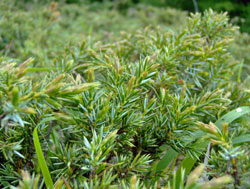 The high mountains (Baba, Nidze, Kozjak, Kozuv, mountain Neretska, mountain Belasica) are the obstacle for the Mediterranean climate to break through, from south, from the Thesaloniki bay. It gets through to north along river Vardar valleys, along rivers valleys Strum and Strumeshnica (from Orkan bay), in light form through Kizli-Derven gorge, along south tributary of Dojran. It is highly expressed up to Demir Kapija (regions of Gevgelija, Valandovo, southwest part of Strumica region). In lighter form (modified) under the continental climate influence it gets through theVardar valley up to Skopje valley, along the valley of Crna reka (through Tikvesh region).
The high mountains (Baba, Nidze, Kozjak, Kozuv, mountain Neretska, mountain Belasica) are the obstacle for the Mediterranean climate to break through, from south, from the Thesaloniki bay. It gets through to north along river Vardar valleys, along rivers valleys Strum and Strumeshnica (from Orkan bay), in light form through Kizli-Derven gorge, along south tributary of Dojran. It is highly expressed up to Demir Kapija (regions of Gevgelija, Valandovo, southwest part of Strumica region). In lighter form (modified) under the continental climate influence it gets through theVardar valley up to Skopje valley, along the valley of Crna reka (through Tikvesh region).
Biological diversity
The Republic of Macedonia had ratified the Convention of biological diversity in1997 and became party in the convention on March.2.1998.
The estimation of the biological diversity and status was made in order to discover the general aspects of protection, along with other global threats, as the climate changes and soil degradation. The most important properties of the biological diversity in the Republic of Macedonia are the large heterogeneousness and high degree of relics and endemism.
Flora
The vegetation in the Republic of Macedonia is a mosaic of various communities with representatives of various vegetation types. In terms of the lower flora groups in the country, algae are especially diversive group of organisms, of which about 1580 species have been defined so far. Mushrooms are heterogeneous group of organisms, and with the previous explorations 1250 species were registered, while the lichens number is around 340 species.
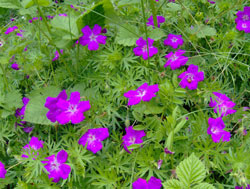 Flora at higher floragroups is pretty rich, with mosaic of various flora vegetation elements (tertiary relics, Mediterranean ,Greek- Anatolia, Alaric Kafkas ,Medium European, Euro Asian, Arkto Alps and cosmopolite) and great number of endemic types (Macedonia, south Balkan and Balkan). Flora is presented with 210 families, 920 clans and around 3700 species. The most numerous group are flower hidden seed plants, with around 3.200 species, mosses (350), ferns (42) and large seed flora (15).
Flora at higher floragroups is pretty rich, with mosaic of various flora vegetation elements (tertiary relics, Mediterranean ,Greek- Anatolia, Alaric Kafkas ,Medium European, Euro Asian, Arkto Alps and cosmopolite) and great number of endemic types (Macedonia, south Balkan and Balkan). Flora is presented with 210 families, 920 clans and around 3700 species. The most numerous group are flower hidden seed plants, with around 3.200 species, mosses (350), ferns (42) and large seed flora (15).
Among lower flora groups, algae are represented with the greatest number of endemism, with 135 endemic tax sons or 8.5 % of the total flora of algae. Most of them are found in Ohrid and Prespa lake, a small number in Dojran lake, at mountain Pelister and in river Babuna. In higher flora groups many endemic species (totally 117 species), are also found and are mainly seen among seed plants (114).
About woods
Wood pulp quantity
The wood pulp quantity should be planned based on managing plans for forests for their commercial use.
Every previous to next year, based on managing plans for forests, production-financial plans are prepared and made at the subsidiaries of Makedonski Sumi.
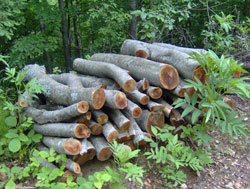 Utilization of wood pulp quantity by the public enterprise is not in conformity with the anticipated. The utility coefficient of felling trees wood pulp quantity ranges around 0,70 in ratio to the possible anticipated coefficient given in the special woods managing plans. This problem is closely connected with volume cutting planning ,openness of woods, seasonal character of road infra structure, unsuitable and old mechanization, unfair competition of fire wood market and etc. The unfair competition of fire wood sale is presented at the market by individuals who offer illegal cut wood in public forests, without any permission. The illegal cut is performed in different ways and means and makes problems for the forestry and public enterprise operation. Because of the stated reasons a great number of wood quantities in the public enterprise remain in warehouses (to be declassed later) in condition of in complete used wood pulp quantity and because of that serious damage and loss is made.
Utilization of wood pulp quantity by the public enterprise is not in conformity with the anticipated. The utility coefficient of felling trees wood pulp quantity ranges around 0,70 in ratio to the possible anticipated coefficient given in the special woods managing plans. This problem is closely connected with volume cutting planning ,openness of woods, seasonal character of road infra structure, unsuitable and old mechanization, unfair competition of fire wood market and etc. The unfair competition of fire wood sale is presented at the market by individuals who offer illegal cut wood in public forests, without any permission. The illegal cut is performed in different ways and means and makes problems for the forestry and public enterprise operation. Because of the stated reasons a great number of wood quantities in the public enterprise remain in warehouses (to be declassed later) in condition of in complete used wood pulp quantity and because of that serious damage and loss is made.
About woods
Hunting and hunting tourism
The public enterprise "Makjedonski shumi" acts on the whole territory of the Republic of Macedonia and the work is performed in 30 subsidiaries, with approximately 2500 permanent employees. Republic of Macedonia occupies the central area of the Balkan Peninsula, which is mixed with river valleys, ravines and high mountains reaching 2800m altitude above sea level and all that provides conditions for development and promotion of the hunting and the hunting tourism as a profitable economic activity, there is a special position and interest in the public enterprise "Makjedonski shumi" for its improvement and rational use for achieving greater financial effects.
The public enterprise "Makjedonski shumi" operates with 8 hunting grounds, with a total area of 101,758 ha where in optimal conditions, an ordinary deer, an fallow deer, an roe deer, mouflons, chamois, wild boars are raised, bred, and protected and descending in the lowland parts, along the rivers, there are various kinds of a feathered game (partridges, turtledoves, quails, pheasants) and many rabbits. The terrains have different relief forms, rich with running water and different types of forests. They are connected with access roads and equipped with hunting and technical facilities and some hunting grounds and hunting houses offer a boarding house. You can use multiple types of services in the hunting grounds, such as: terrain vehicle, horse, guide service, game driving, dog, weapons and ammunition rental or to look the hunting ground from hunting ambushes and to shoot with a camera.
The hunting ground "Dushegubica"- Kichevo
The hunting ground "Dushegubica"- Kichevo covers an area of 9,800 ha, and the terrain configuration allows a survival and a development of several game species, mostly: roe deer, chamois, wild boar etc.
Public hunting area “Polaki”-Kocani
The public hunting area “Polaki” is located 150 km south of Skopje at the southern slopes of mountain Osogovo, at total surface of 15.250he. The diversity of configuration forms and the significant difference in height (500-2.084m side elevation), the range of various types of trees and abundance of running water during the year enable the regional spreading and survival of many sorts of big games as common deer, fallow deer, roe deer, wild sheep and wild boar. The hunting area has a fenced area of about 1.000 he where game birds are kept for shooting. The accessibility of roads and hunting equipment enable quick and safe hunting in the fenced part of the hunting area throughout the year. Hunters’ Lodge “Pashadjikovo” is located here occupying area of 200m2 and with capacity for 10 people. Besides the Hunters lodge, hunters can also stay in the tourist center “Ponikva” which is situated near the hunting area.
Hunting area “Kadina reka-Skopje
The hunting area “Kadina Reka” is located on the mountain massifs of Karadjica, part of Jakupica, Dautioca, and Aliagica, at total surface of 21.100he, only 25km from Skopje. The configuration of the mountain massifs in the hunting area is characterized by special heterogeneity and important height difference of 2.240м, which enables zone spreading of game. The vegetation and climate conditions at the hunting area, abundance of beech and beech-fir woods provide beautiful conditions for living and growth of common deer. The diversity and richness of plants which may be found here enables growing of high grade and high trophy cattle. Besides common deer in the hunting area other sorts of big games may be found such as: roe deer, wild goat, wild boar and bear. Near the hunting area there is a hunter’s lodge with capacity for eight people offering comfortable stay. Due to the vicinity of the Hunting area hunters can also find lodgings in some of the hotels in Skopje.
Public hunting area “Leshnica”-Tetovo
The public hunting area “Leshnica" is located at the east and northeast slopes of the mountain Shara, at surface of 11.930 he and side elevation of 978m to 2.748 m, only 55 km from Skopje,. It distinguishes by big inclinations of the terrain, steep and heavy passable slopes, developed and rich hydrographic network and several glacier lakes. The structure and composition of wood and other vegetation and the abundance of running water are good conditions for survival and development of many sorts of games such as: fallow deer, wild boar, bear, lynx, and etc. There are arranged hunting area lanes which lead through heavy accessible terrains. Wild goat, which is the special attraction and challenge for hunters, can be found at the upper forest border and on the mountainous pastures with rocky surfaces. Besides wild goats, lovers of good and unusual photography have rare possibility to enjoy and take excellent photographs of this breathtaking scenery.
Hunting area “Chestovo”-Valandovo
The hunting area “Chestovo” is located at surface of 7.000 he of plain and ill compositional forms only 150 km from Skopje,. The side elevation in the hunting area is from 58-322 m. The macro climate in the hunting area which is influenced by the Mediterranean and continental climate enables range of more plant sorts of trees, bushes, grass, and crops of corn plants-corn, wheat, barley, rye and everything else which provides healthy and natural food for the game. The abundance of food, as well as the pure running water of river Anska provide ideal conditions for growth of wild rabbit, partridge, field partridge and hunting pheasant. Three- sectioned cage adapted for pheasant chickens is built within this hunting area on 2he in order to increase the interest and the offer for feathery game hunting.
Hunting area “Milisin” - Gevgelia
At the south west part of the Republic of Macedonia, in the region of Gevgelia, near the border with the Republic of Greece at surface of 9.280 the hunting area “Milisin” is located. The hunting area is with developed configuration, various expositions of ground and side elevation of 430-2.165 m. The influence of the Mediterranean climate, and a lot of water currents, wood of beech, enable ideal conditions for the wild boar and roe deer. In the hunting areas there are also fenced areas of 313 he for breeding of wild boar. The fenced area is equipped with hunting equipment and technical structures such being the three-part cage built for breeding trophy wild boars. Hunting within the fenced area is permitted during the whole year, and besides wild boar, the roe deer can also be hunted. There is also a Hunter’s Lodge of 100m2 build on the grounds of this hunting area with capacity for four people.
Besides the given hunting grounds, the public enterprise "Makjedonski shumi" operates also with the hunting ground "Rozhden" – Kavadarci, with a total area of 14.758 ha and with the hunting ground "Koprishnica" – Negotino, with a total area of 13.370 ha. Main commercial game species in these hunting grounds are the roe deer and the wild boar.



